Online, team-based games are absolutely dominating the gaming scene right now, from MOBAs to MOSAs to CCGs to base defense and more. Elbowing into that crowd is Fortnite, a new hybrid game from Epic, who has been responsible for Paragon, the earlier Gears Of War games, and the upcoming Unreal Tournament reboot.
Following in the footsteps of so many other developers these days, Epic is testing the waters with a huge pool of Beta testers, opening up Early Access at least five months (and potentially much longer) before full release in 2018.
After having torn up Husks, Lobbers, Pitchers, and Llamas by the hundreds, we’re now ready to give a full analysis of what’s on display so far. Keep in mind that this is a review based on the current state of Beta — the full game isn’t slated to launch until next year, and many changes are expected to be made before that time.
 Get ready to rack up an impressive kill count on these guys
Get ready to rack up an impressive kill count on these guys
A Satisfying Mess
Somebody let out some mad science and accidentally zapped 98% of the population off the earth, while simultaneously creating giant killer storms that also… summon hordes of zombies? Eh, just go with it. Then there’s a race of seemingly-sentient and very helpful bots who would really like you to help lead humanity on a quest for survival.
How are we going to save the world and perform some truly dangerous science experiments at the same time? By building up bases filled with traps and then slaughtering wave after wave of the shambling undead, of course.
The big focus on collecting / crafting in the first phase of any mission has echoes of Ark, where you smash everything apart while running around so you can build a new wood wall or ceiling for your collection.
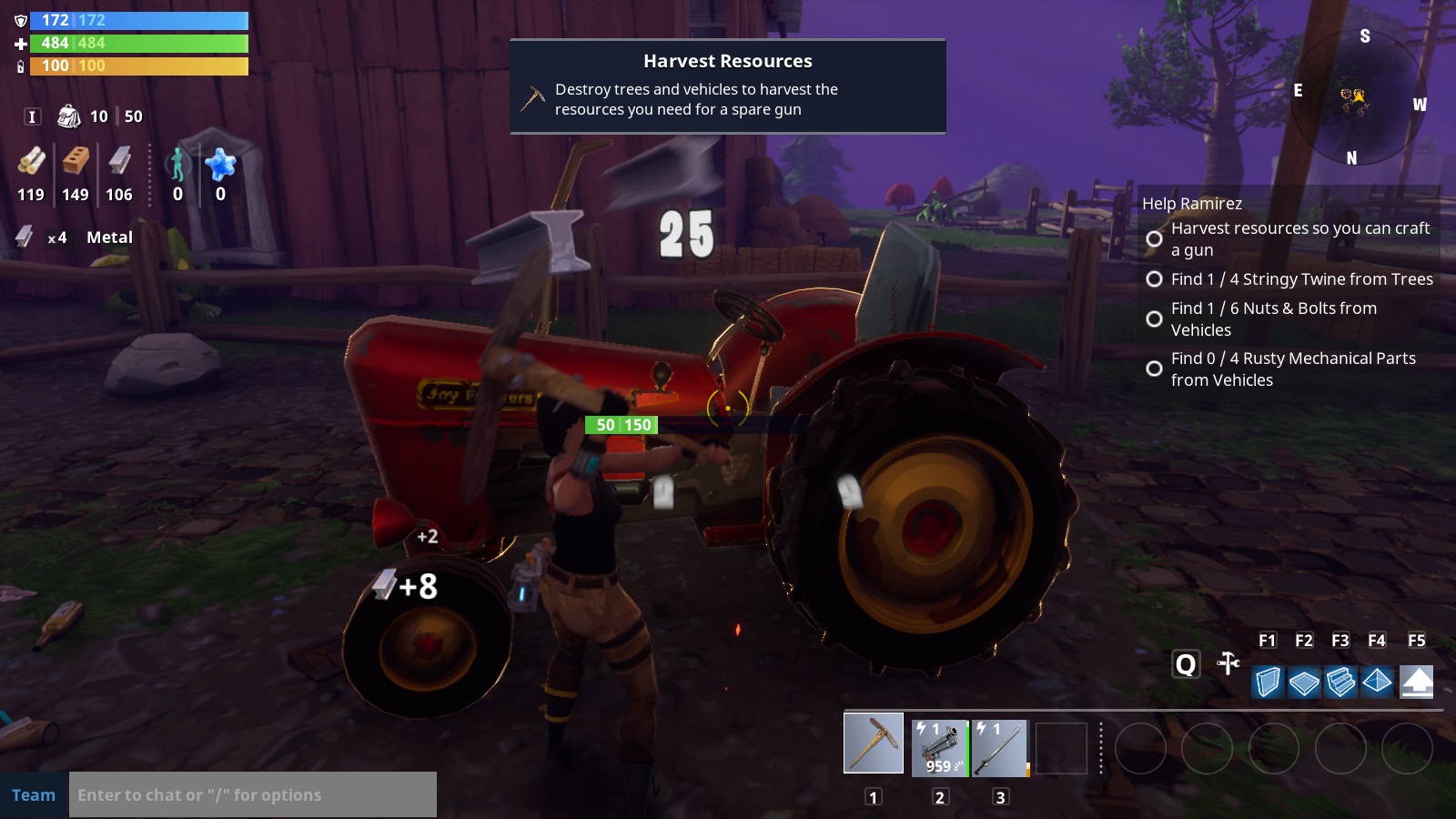 I’m somehow dismantling a tractor with a pickaxe to acquire metal bars
I’m somehow dismantling a tractor with a pickaxe to acquire metal bars
Bashing literally anything and everything across the landscape to pieces nets you crafting parts for not just base components but also weapons and traps, which will of course bring Minecraft to mind. In the tutorial you’ll utterly annihilate cars and trees to craft… a gun.
Did all the gun stores disappear with the storm too? I guess so, since you have to craft them, or find them by destroying pinata llamas randomly awarded at the end of missions (yeah, this game gets weird).
If you couldn’t tell, Fortnite is a jumbled hodgepodge of styles and atmospheres, although for the most part this all really works well. There’s humor along the lines of Borderlands or Portal, base defense and trap building game play similar to Dungeon Defenders, and a cutesy art style that will make you think of any recent Blizzard title.
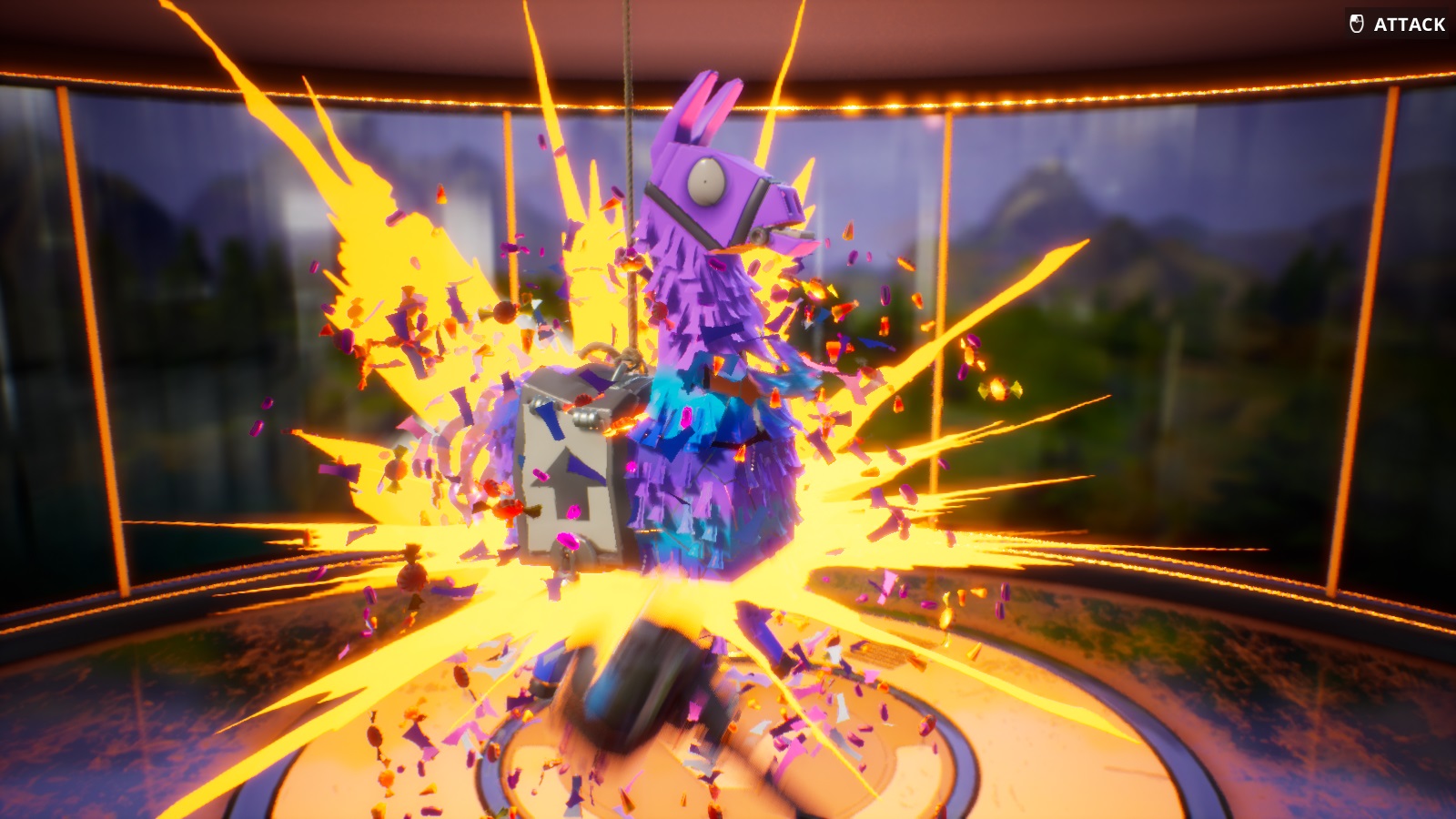 Exploding pinata llamas play a fairly prominent role in Fortnite
Exploding pinata llamas play a fairly prominent role in Fortnite
Base Building
Most bases for each map are transitory — meaning they’ll be gone after the quest is over — but your primary home base is permanent and builds up over time. I named mine the Illustrious Kingdom of Home Basington. As you complete quests, your sphere of influence from the home base expands.
After you’ve left the map a barren wasteland by hacking apart every structure and object for spare parts, base building is a big component of the game to prepare for the waves of incoming monsters.
This part is actually quite satisfying, with an array of traps to build that must be earned by loot drops and then crafted. From healing pads to help your team to gas traps, darts, electricity jolts, and reloading spikes, there’s no shortage of devious ways to protect your home and keep invaders out.
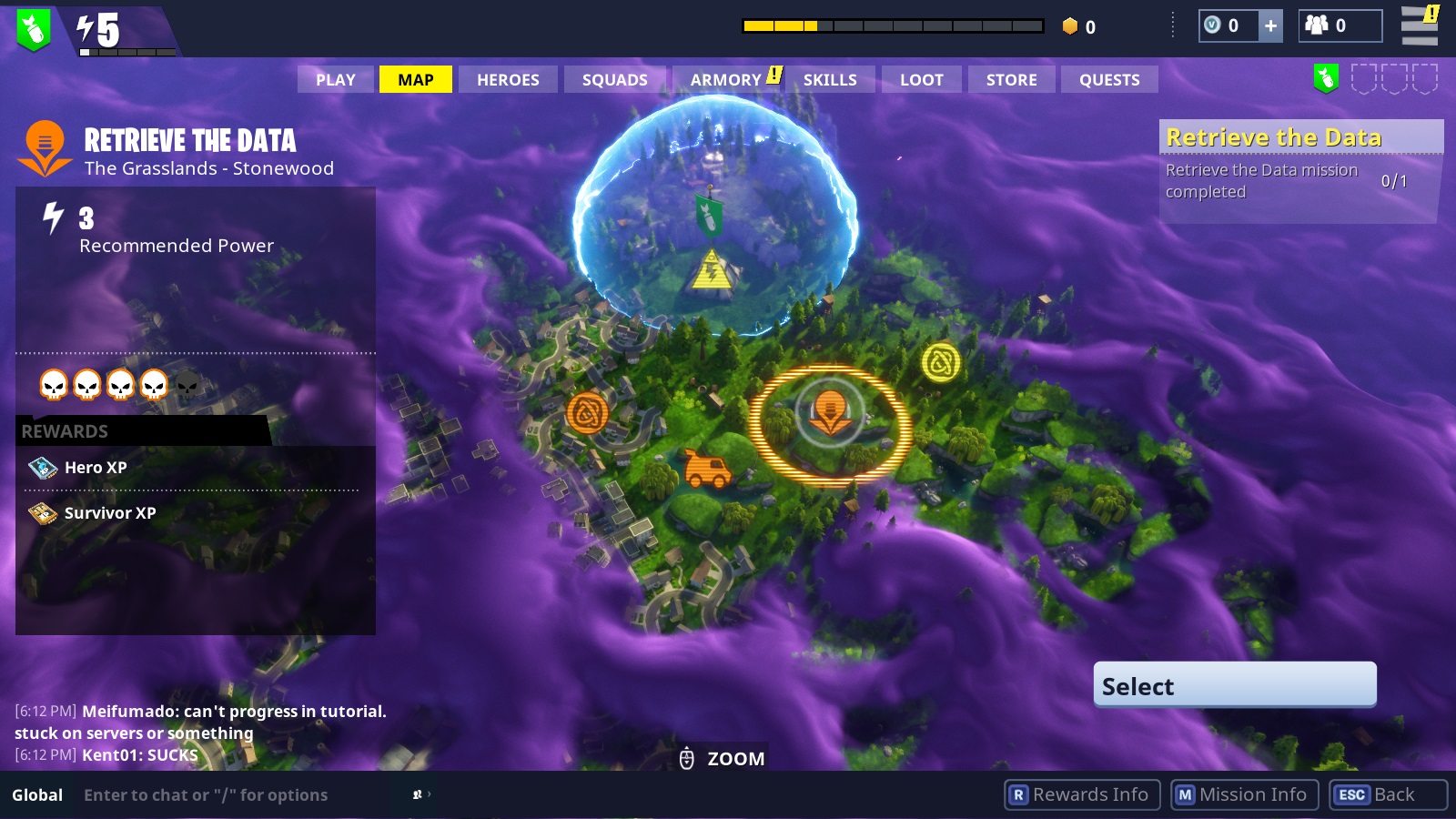 Beginning to expand out to new locations
Beginning to expand out to new locations
Beyond traps, there are plenty of different strategies to employ on how you want to design your base. Protected roof tops nests for snipers? Winding maze of tunnels filled with spike traps? Funneling the enemies with stone walls into a kill zone? You can do all that and more.
Structures can be reconfigured on the fly, adding doors to walls and building stairs to get where you need to go. Creative use of base editing can get floors and ceilings into some interesting configurations without blocking your line of fire and while keeping your precious Atlas safe.
After playing for a couple dozen hours, I’ve come to the hilarious conclusion that Fortnite somehow has a more of a satisfying building UI than Fallout 4 that’s both more intuitive and easier to navigate. Take notes on that, Bethesda.
There is a downside to the base building that will need to be addressed before full release though — if you have four players really on top of things, the enemies will rarely ever reach your traps.
Breaking with the style of the aforementioned Dungeon Defenders, unless you are on a particularly difficult quest or feel like trying to solo a map, sometimes all that effort put into base building feels wasted. Whether the enemies need to be tougher or the player damage needs to be lowered, that issue could use some tweaks.
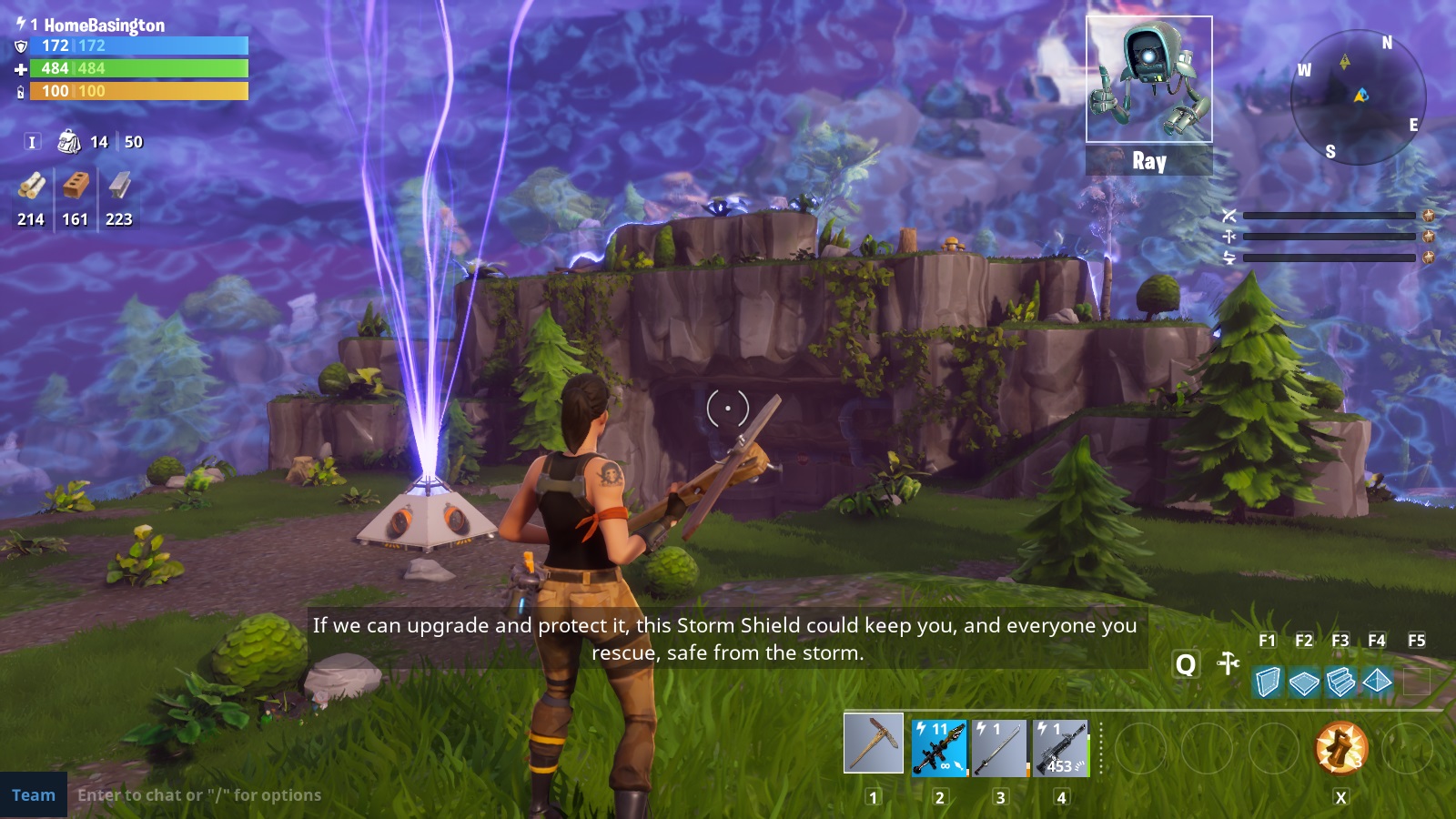 It looks empty now, but soon a sprawling complex will develop here
It looks empty now, but soon a sprawling complex will develop here
Sometimes A Not-So-Satisfying Mess
There’s always some new, unexpected element being thrown into Fortnite, like saving wayward Survivors or suddenly playing whack-a-troll with your pickaxe when an interdimensional being pops into existence for no apparent reason.
While that leads to plenty of fun and excitement, it also results in a confusing mess of elements after each quest is completed. There are an absurd number of elements at play here drawn from a variety of game genres, and many of them aren’t readily accessible or immediately easy to understand, like building Squads or switching to a different primary Hero.
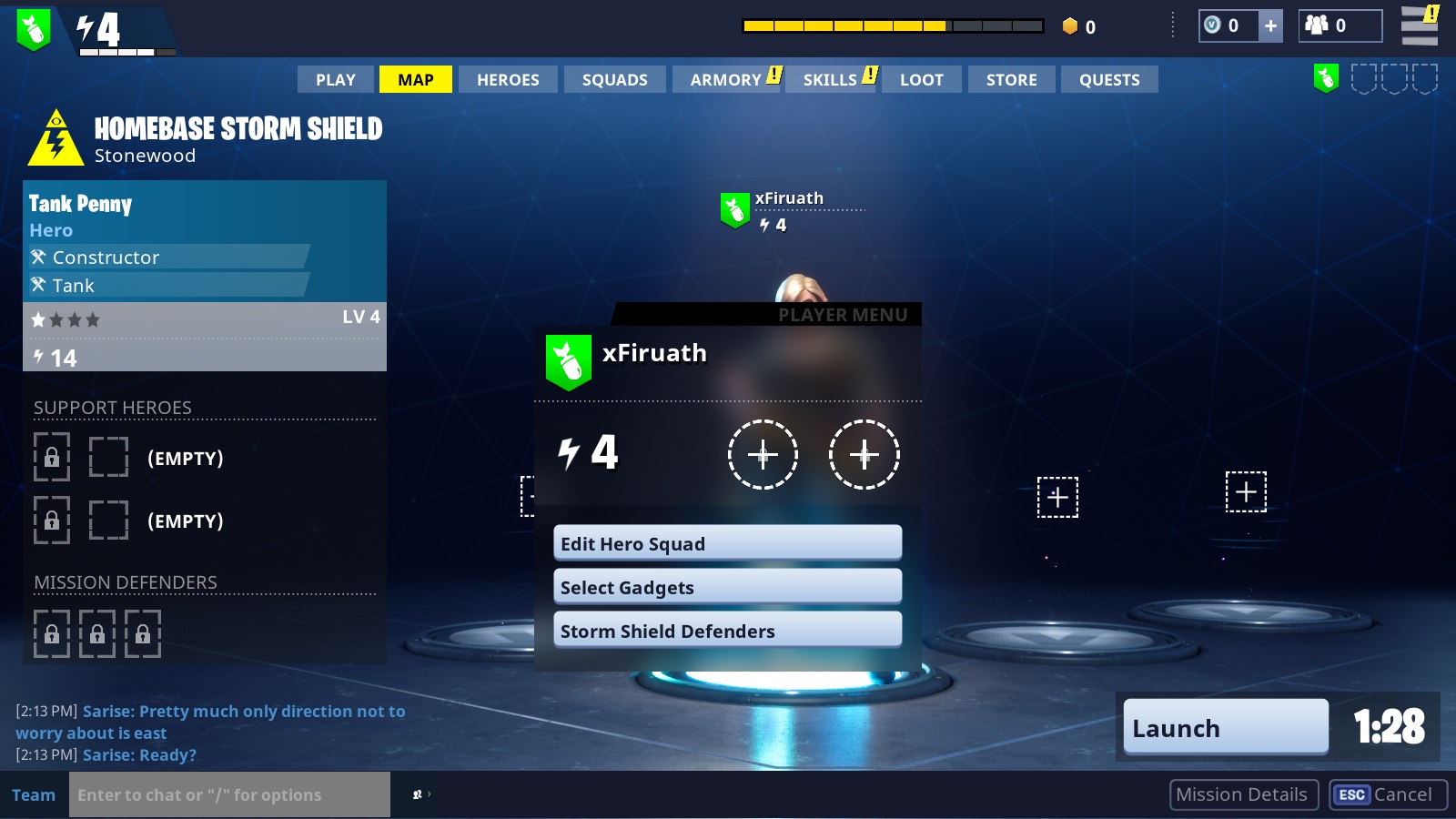 Every screen has too many options and it isn’t clear what half of them do or why they are locked
Every screen has too many options and it isn’t clear what half of them do or why they are locked
There are several Hero classes to switch between – soldier, constructor, ninja and outlander, along with a horde of sub-classes for different skill lineups – as well as different classifications for various Survivors.
Those non-Hero characters (which level by a different experience track than you) are grouped into Survivor Squads, Defender Squads, and Expedition Squads, all of which have multiple slots to unlock, groups to assemble, and bonuses to accrue based on how you assemble them.
This is all complicated by randomized card drops for everything from Heroes to Survivors to Schematics for base objects, so working towards a specific build isn’t always a viable option.
On top of that, there’s a quest to upgrade your overall Collection of all these different elements by permanently sacrificing cards you’ve earned, but you can’t access that area until you unlock a specific skill later on in the unwieldy tree. While skill points are earned by completing quests, research points generate over time, but you can upgrade their accrual rate by using skill points.
Between multiple star versions of the same characters who can be leveled independently, three different experience tracks, the ability to evolve anything, four different skill trees… it all becomes clear that Fortnite is in need of some simplification. Or at the very least, a more coherent tutorial that makes it more clear how all this works from the beginning.
That being said, even though there’s too much going on, each of those individual elements is a ton of fun to play with, so it’s less of a complaint than you’d think. With a little tweaking, this could be the new big mutliplayer franchise to look out for.
Ready to try out Early Access? Check out our beginner’s guide here before you get started building and killing!

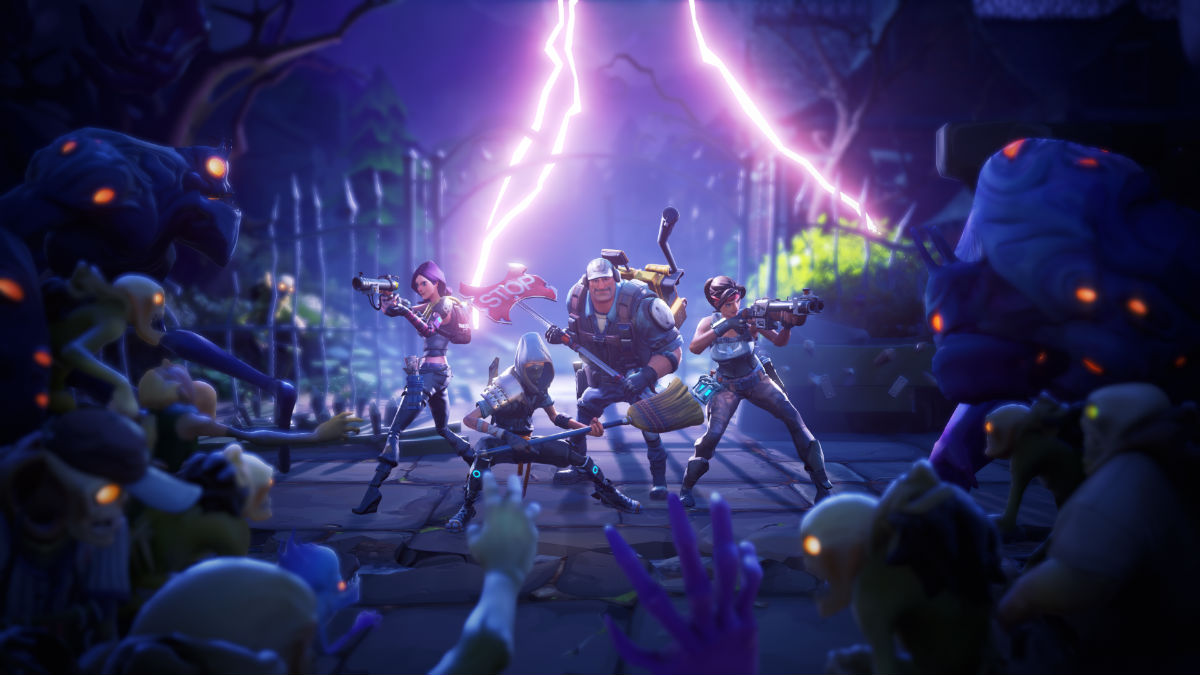





Published: Jul 21, 2017 08:27 pm